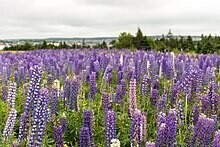Categories
Wild Lupine
$5.00
Sold out
Sold out
Product Details
Wild Lupine blooms profusely in spikes with pea-like blue & purple flowers. Palm-shaped leaves surround the plant as an added attraction, making it a popular choice for gardens or restorations with dry to sandy soils. Lupine requires well-drained soils but will adapt to all dry soil types; sand. loam, gravel and clay. This legume is essential to the life cycle of the Karner Blue butterfly, a federally-endangered species native to the Great Lakes region. Lupine foliage can look a little worn by the end of summer, so plan for late summer and fall bloomers nearby in the garden.
Save this product for later
Display prices in:USD
